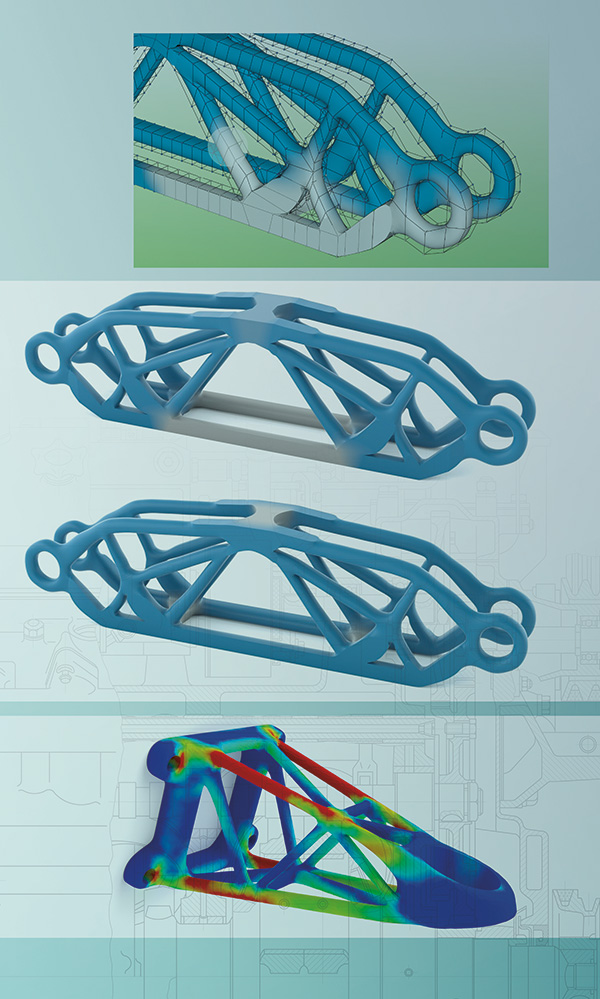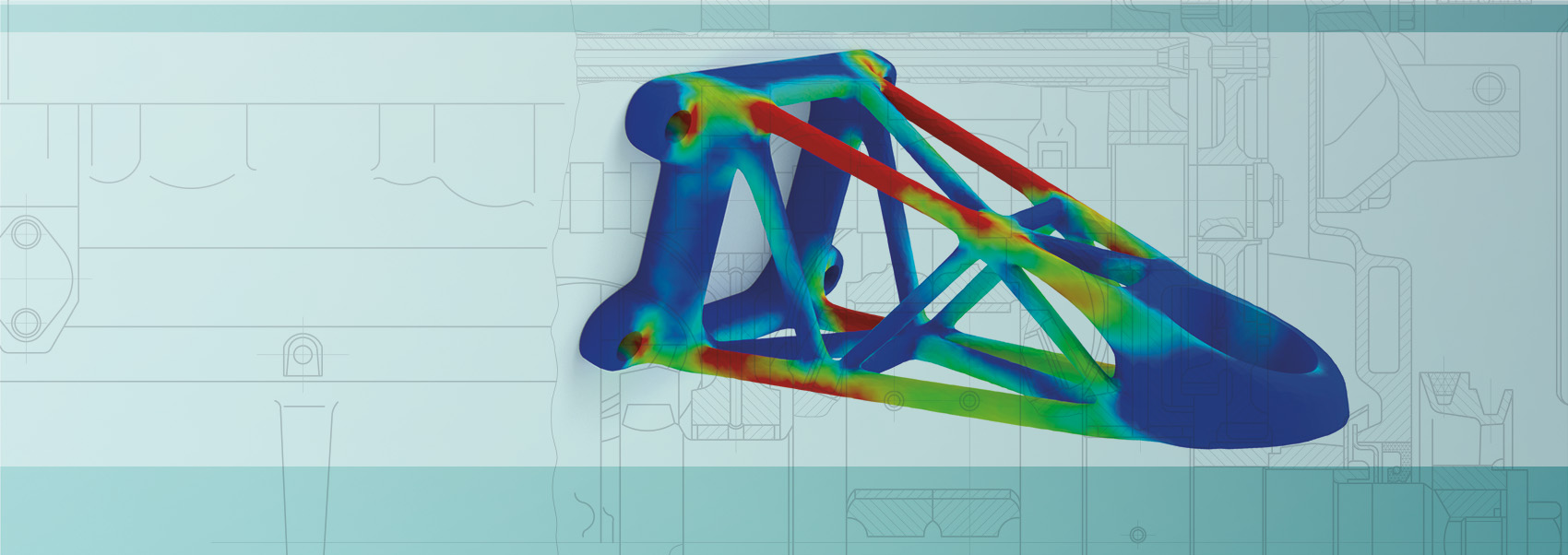Faster topology optimization
To assess RISTRA, Fraunhofer IGD cooperated with a customer who deployed the software in combination with a topology optimization system. The result was a marked gain in speed. With generative design, the engineer starts with a cuboid space. Then they create, for example, a chassis within the constraints of that cube. Initially, the defined space is completely filled with material. Multiple simulations are then performed to reduce the amount of material. Software is employed to verify that the geometry of the chassis would withstand expected loads. If the result is positive, a further simulation is performed, and so on, until a shape is found with the least possible volume of material but with the required strength. Clearly, this a time-consuming approach, calling for a large number of simulations. RISTRA delivers a time saving equivalent to an order of magnitude.
Digital support for additive manufacturing
Additive manufacturing techniques are gaining in popularity in the automotive industry. This is fueling a growing need for an end-to-end digital process chain. Fraunhofer IGD pays particular attention to additive manufacturing methods capable of creating attributes that vary by location on the component, i.e., by means of 3D multi-material printing. In the context of multi-phase topology optimization, this makes it possible to position diverse materials, with diverse properties, where they are most beneficial. And in contrast to the conventional simulation methods described above, the geometry remains unchanged. For a given component, the engineer assumes a variety of materials and distributes them in the best configuration possible via multiple simulations, for instance to make parts with varying porosity.
Multi-material printing also calls for new modeling methods, since currently deployed CAD techniques define an object via its surface, and prohibit the modeling of varied properties via volume. The only work-around is to divide a component into “slices” and to apply specific material attributes to each slice. This is a laborious manual process, and gradations can only be approximated. 3D multi-material printing, by contrast, produces smooth transitions, allowing an entire sub-assembly to be manufactured as a single piece, in one fell swoop—whereas, until now, sub-assemblies had to be made by combining multiple individual components of diverse materials. Smooth transitions help prevent, for example, cracks from forming due to the differing temperature expansion coefficients of the materials employed. Against this background, Fraunhofer IGD developed GraMMaCAD—a software solution that allows materials to be distributed directly on the CAD model without having to first divide the object into slices.
A wealth of innovation
Fraunhofer IGD not only has proven expertise in simulation and modeling. It also has deep skills in 3D printing and 3D scanning. 3D digitization of real-world physical objects is employed for manual prototypes, and for comparison of predefined geometries and attributes with any manual changes made. In addition, quality control professionals leverage 3D digitization to check externally sourced components and to perform 3D quality-control measurements. The universal printer driver Cuttlefish® enables the precise additive manufacture of colored, translucent objects. The driver supports a variety of printing methods and materials. A possible future field of research is the integration of 3D printing technologies directly into simulation solutions.
The changes sweeping through the auto industry require new solutions and methods. Fraunhofer IGD provides manufacturers with effective support through expertise, in-depth research and the development of pioneering tools.

 Fraunhofer Institute for Computer Graphics Research IGD
Fraunhofer Institute for Computer Graphics Research IGD